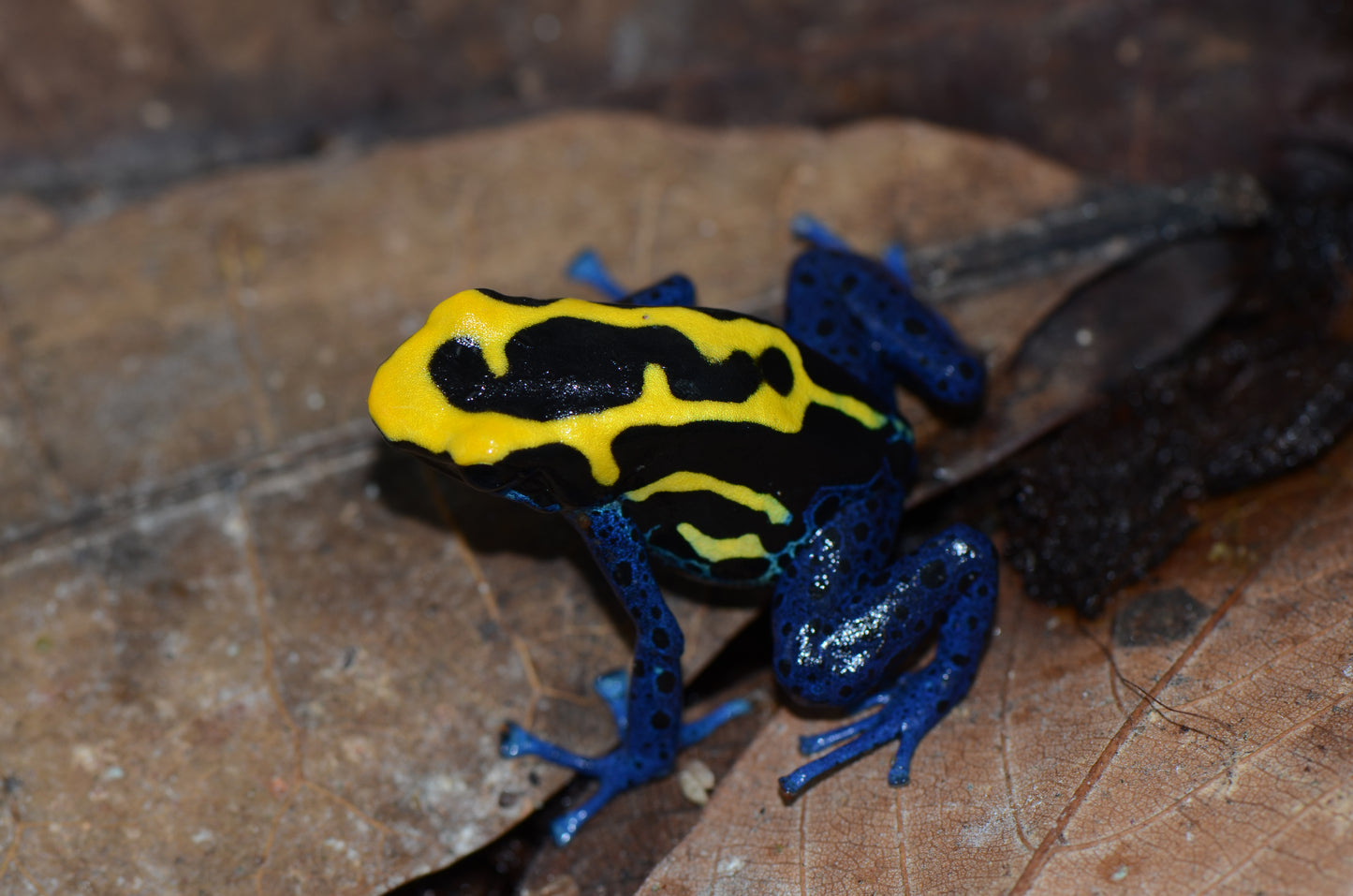Understory Enterprises
Dendrobates tinctorius "Dwarf French Guyana"
Dendrobates tinctorius "Dwarf French Guyana"
Couldn't load pickup availability
Live arrival of any plants or feeder cultures will not be guaranteed if you do not choose next day or two day shipping.
This lovely form from French Guyana is one of the smallest morphs of Dendrobates tinctorius. Its adult size is similar to your average Dendrobates auratus.
Distributed throughout the Guyana shield, Dendrobates tinctorius is the giant of the poison frogs. With perhaps only some Peruvian forms of A. trivittatta rivaling it for size, some reports of wild specimens topping 7cm would confirm tinctorius as the largest poison frog. However not all tinctorius reach these relatively monstrous sizes, with several forms such as the “nominal”, “lorenzo” and “oyapok” forms staying in the 4-5 cm range.
Tinctorius are hardy captives and make excellent vivarium subjects. Their bold nature and the endless variety of beautiful colour morphs have made them a staple of the poison frog hobby for many years. Despite the relative ease of care, it seems that one of the bigger challenges faced by enthusiasts working with tinctorius is growing CB animals to the sizes attained by their wild counterparts. Careful attention to offer a varied diet and proper supplementation, as well as a consistently available food supply will go a long way in successfully raising these frogs.


